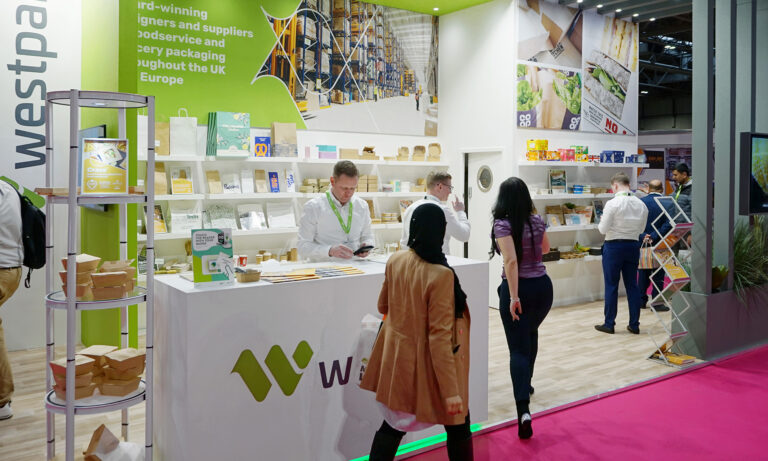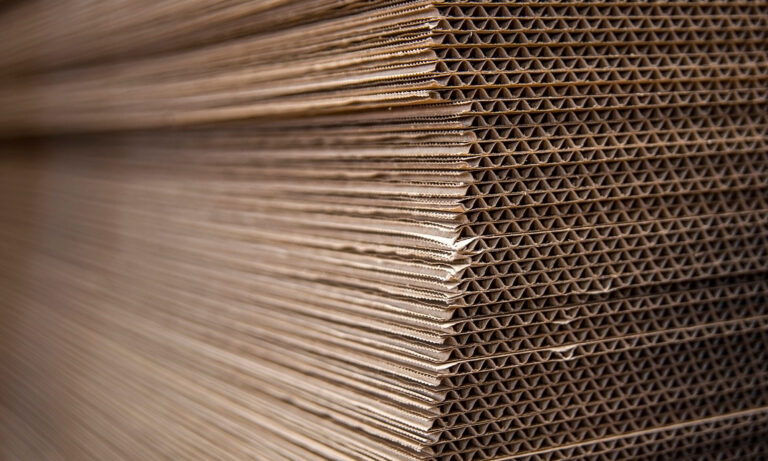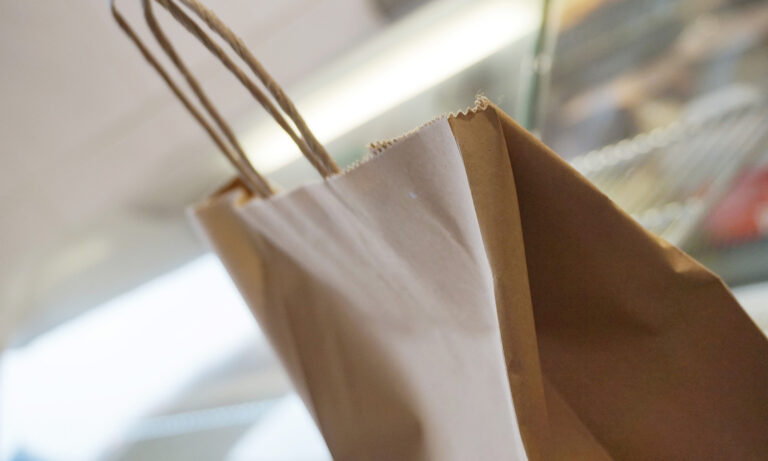What Is Compostable Packaging?
Compostable packaging breaks down into a natural or organic state when placed in a ‘composting environment’. Composting is a human-driven process in which a material will biodegrade under specific conditions – such as at a certain temperature or within a set timeframe – when exposed to the correct balance of microbes, moisture, oxygen and warmth. To be called compostable, these products must biodegrade into nutrient-rich compost without leaving toxic residues.
Composting is an aerobic process, reliant on the presence of oxygen. Under layers of waste, organisms naturally oxidise organic matter: nitrogen chemicals turn to nitrate, sulphur to sulphate, and phosphorus to phosphate. The composting process produces a nutrient-rich fertiliser. The slight downside is that aerobic processes produce CO2 as a waste product. Nevertheless, composting is a highly desirable clean source recycling alternative to landfill.
These specific conditions of compostability are laid out in various codes and rules, officially known as Standards. Products that comply with these Standards are certified and labelled to guarantee they are compostable. The most common standards used for packaging products are the European EN 13432 and the American ASTM D6400 standards.
Are There Different Levels Of Compostability?
Packaging Compostability is graded into two levels:
- OK Compost INDUSTRIAL (EN 13432)
Packaging or products featuring the OK compost INDUSTRIAL label are guaranteed as biodegradable in an industrial composting plant. This applies to all components, inks and additives. The sole reference point for the certification programme is the harmonised EN 13432:2000 standard: in any event any product featuring the OK compost INDUSTRIAL logo complies with the requirements of the EU Packaging Directive (94/62/EEC). - OK Compost HOME
The temperature in a garden compost heap is clearly lower and less constant than in an industrial composting environment. This is why composting in the garden is a more demanding, slower-paced process. OK compost HOME was a standard developed to guarantee complete biodegradability in the light of specific requirements, even in a garden compost heap.
Where Does Compostable Packaging Offer The Most Benefit?
Recycling single use plastics is widely recognised as the best way to go as an overall direction. The Circular Economy concept is being pioneered and promoted by the Ellen McArthur Foundation and adopted by many world business leaders.
Recycling food packaging in the Food Service sector is problematic, because food remnants are often left in the packaging and contaminate the plastic waste. This currently renders it void for recycling and will divert the waste to land fill or incineration.
Compostable packaging for food is promoted as the answer here and it is recommended that it is collected for processing through industrial composting facilities along with the food waste. To make this a success, there need to be clearly marked compostable packaging / food waste bins and a separate collection service that can ensure the wasted is channelled correctly. Unfortunately, that is rarely available.
What Are The Negatives And Constraints?
You could say that, if packaging is compostable and consumers dispose of it in general waste bins, it will still break down in landfill, making it a better choice than conventional plastic. But only some types of compostable packaging actually break down in a sealed landfill site. Compostable packaging needs certain temperatures and microbes to enable the break-down process and these just aren’t available at landfill sites.
Anaerobic digestion (AD) is the most common method of composting in the UK and is reliant on the absence of oxygen. Materials are sealed off and the bacteria live off the organic matter itself. A slower method than composting, AD produces rich fertiliser and also methane, which is a key component of biogas used to generate clean electricity. AD offers a closed loop solution for food waste.
The bad news is that bioplastics cannot be treated by AD. “If you currently put a biodegradable piece of plastic into your food waste, most Anaerobic Digesters who will receive your food waste will remove it,” explained University College London Professor of Materials and Society, Mark Miodownik. “These conditions are not compatible with the bio-degradable plastic, so they get rid of it. “The other reason they get rid of it, is that they can’t tell the difference between you putting a normal piece of plastic in and the biodegradable. When it comes to a mass system, they have no idea. So they just remove it, it gets burned. That’s bad. It’s bad for the environment. And it’s not a system that currently works at the moment.”
One of the biggest problems surrounding compostable plastic is the problem of cross-contamination. Products are recycled in material recovery facilities, which use optical technology to view and sort waste. If compostable packaging enters the recycling stream, they can contaminate the batch and make it impossible to process.
Many Grocery Retailers include the allowance of certified HOME compostable packaging in their new packaging commitments. Although this is the highest level of compostability, if the packaging is disposed of in the recycling channels, it will still contaminate them as outlined above, and there are many households in the UK, particularly in the major urban areas that don’t have a garden or a compost heap.
Conclusion
Whilst biodegradable packaging materials can provide a good answer in selected circumstances, with the current levels of waste disposal infrastructure and the complexities this brings, compostable packaging is generally not a viable solution to the wider plastic packaging problem at the moment. Westpak offer unbiased advice on the range of solutions available to you to reduce your plastic packaging consumption and to increase the use of sustainable packaging materials. Contact Seth Hicks on 01322 295990 or just give us a call on 0800 298 55844.


